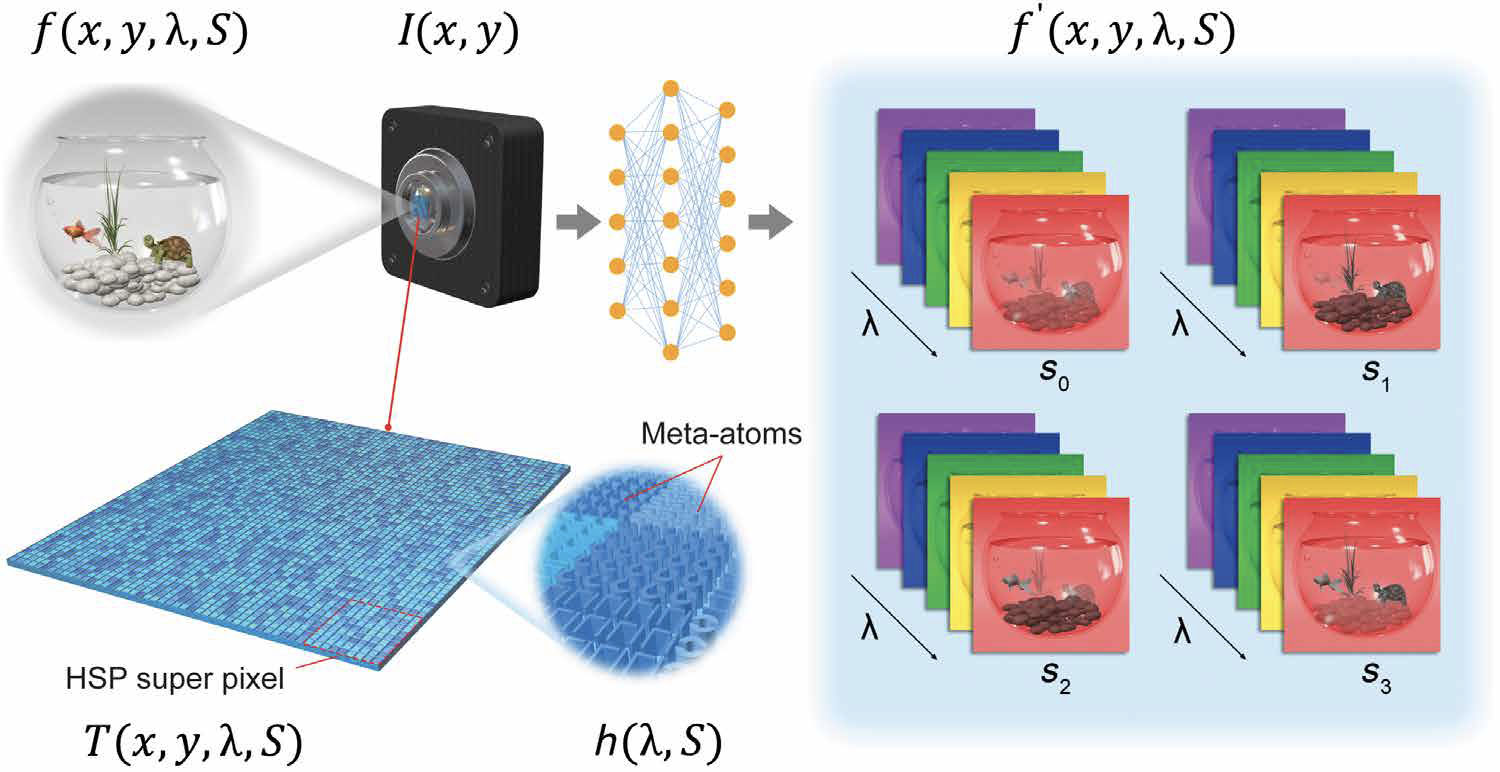| Sep 05, 2024 |
Seeing like a butterfly: Optical invention enhances camera capabilities
(Nanowerk News) Butterflies can see more of the world than humans, including more colors and the field oscillation direction, or polarization, of light. This special ability enables them to navigate with precision, forage for food and communicate with one another. Other species, like the mantis shrimp, can sense an even wider spectrum of light, as well as the circular polarization, or spinning states, of light waves. They use this capability to signal a “love code,” which helps them find and be discovered by mates.
|
|
Inspired by these abilities in the animal kingdom, a team of researchers in the Penn State College of Engineering developed an ultrathin optical element known as a metasurface, which can attach to a conventional camera and encode the spectral and polarization data of images captured in a snapshot or video through tiny, antenna-like nanostructures that tailor light properties. A machine learning framework, also developed by the team, then decodes this multi-dimensional visual information in real-time on a standard laptop.
|
|
The researchers published their work in Science Advances ("Real-time machine learning–enhanced hyperspectro-polarimetric imaging via an encoding metasurface").
|
 |
| Conceptual diagram of the proposed HSP camera. The image of an object (e.g., a fish tank), which has spectral and polarization information denoted by f(x, y, λ, S), is transformed into a 2D intensity mapping, I(x, y), by the HSP camera. This HSP camera system comprises two main components: encoding metasurfaces at the frontend to encode the information and a ML algorithm at the backend to decode the information. Through the HSP camera, the encoded 2D intensity information of the tank image is expanded into 4D information f ′ (x, y, λ, S). Certain parts of this image (such as the fish and the rock) in S2 become more pronounced when viewed under different polarizations. The encoding metasurfaces encompass multiple wavelength and polarization encoders h(λ, S), which can be flexibly combined to construct an HSP superpixel T(x, y, λ, S) according to the required resolution. (Image: reproduced from DOI:10.1126/sciadv.adp5192, CC BY)
|
|
“As the animal kingdom shows us, the aspects of light beyond what we can see with our eyes holds information that we can use in a variety of applications,” said Xingjie Ni, associate professor of electrical engineering and lead corresponding author of the paper. “To do this, we effectively transformed a conventional camera into a compact, lightweight hyperspectro-polarimetric camera by integrating our metasurface within it.”
|
|
Hyperspectral and polarimetric cameras — which often are bulky and expensive to produce — capture either spectrum or polarization data, but not both simultaneously, Ni explained. By contrast, when positioned between a photography camera’s lens and sensors, the three-millimeter-by-three-millimeter metasurface, which is inexpensive to manufacture, captures both types of imaging data simultaneously and transmits the data immediately to a computer.
|
|
The raw images must then be decoded to reveal the spectral and polarization information. To achieve this, Bofeng Liu, a doctoral student in electrical engineering and co-author of the paper, built a machine learning framework trained on 1.8 million images using data augmentation techniques.
|
|
“At 28 frames per second — primarily limited by the speed of the camera we used — we are able to rapidly recover both spectral and polarization information using our neural network,” Liu said. “This allows us to capture and view the image data in real-time.”
|
|
Researchers tested their metasurface and neural network by video recording transparent “PSU” letters under different laser beam illuminations. They also captured images of the glorious scarab beetle, known for reflecting circularly polarized light visible to others of its species.
|
|
Having immediate access to hyperspectro-polarimetric information of different objects could benefit consumers if the technology were commercialized, Ni said.
|
|
“We could bring our camera along to the grocery store, take snapshots and assess the freshness of the fruit and vegetables on the shelves before buying,” Ni said. “This augmented camera opens a window into the unseen world.” |
|
Additionally, in biomedical applications, Ni said, hyperspectro-polarimetric information could be used to differentiate the material and structural properties of tissues within the body, potentially aiding in the diagnosis of cancerous cells.
|
|
This work builds on Ni’s prior research and development of other metasurfaces, including one that mimics the processing power of the human eye, and metalenses, including one capable of imaging far-away objects, including the moon.
|

